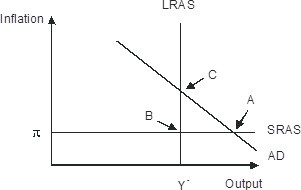One of the basic differences between social and economic regulations is that
A) economic regulations only apply to financial institutions while social regulations apply to a greater variety of institutions.
B) social regulations only apply to non-profit organizations while economic regulations apply only to for-profit organizations.
C) economic regulations cover only particular industries while social regulations apply to all firms in the economy.
D) economic regulations focus on the banking industry while social regulations focus on monopolies.
Answer: C) economic regulations cover only particular industries while social regulations apply to all firms in the economy.
You might also like to view...
Supply-side economics focuses attention on how fiscal policy might be used to
A) shift the aggregate supply curve out. B) increase consumption. C) align aggregate demand and aggregate supply. D) increase aggregate demand to the full-employment level of real GDP.
Refer to the figure below. In response to gradually falling inflation, this economy will eventually move from its short-run equilibrium to its long-run equilibrium. Graphically, this would be seen as 
A. long-run aggregate supply shifting leftward B. Short-run aggregate supply shifting upward C. Short-run aggregate supply shifting downward D. Aggregate demand shifting leftward
If a good is normal, its
A. Cross-price elasticity is positive. B. Income elasticity of demand is positive. C. Price elasticity of demand is positive. D. Income elasticity of demand is negative.
During 2007, the United States and Japan announced possible limits on Chinese imports through higher tariffs on Chinese products. To avoid these limits, China would have had to:
A. decrease the value of the yuan and increase its trade surplus. B. increase the value of the yuan and increase its trade surplus. C. decrease the value of the yuan and decrease its trade surplus. D. increase the value of the yuan and decrease its trade surplus.